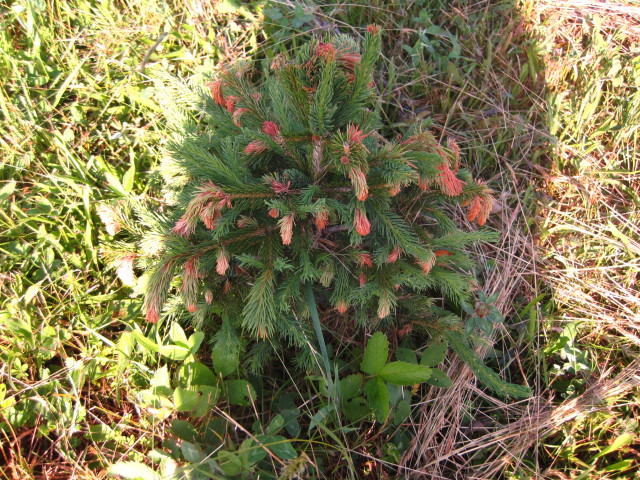Question
 Norway Spruce
Norway Spruce
Hello Jim!
We raise evergreens (arborvitae, white pine, Norway Spruce) on 5 acres of land here in PA and have been for 30 years. We have something wrong with our Norways and many hours of internet research, and a long visit to the local Agway to go through books and pictures have left us perplexed. The trees ( ages 3-9 years size 12"-3') have tips all over that are turning brown and curling- It looks like the new growth. In addition, new growth buds are died up and brown.Twisting has occurred on a few of the tops and branches of some ( not the majority) of the trees.We have examined closely for cankers and pests and seen nothing. The rust/brown tips do not feel unusually dry and do not drop or pull off. The trees look very bad- I have several pictures I could send you. Is there any spray we can use that would even have a chance of helping/saving the trees- we have hundreds. Thank you so much in advance for your help- we are sick about this.
AnswerLooks like Diplodia Tip Blight.
Symptoms: Diplodia tip blight of pines is a relatively
easy disease to diagnose -- a homeowner can become
acquainted with its symptoms by examining older pines in
landscape plantings . Tip blight kills the
expanding candle, the current year's growth tip. The candle
curls and turns brown, giving the tree brown tips,
particularly in the lower branches on older trees. The
needles in the killed candle will be only partially
expanded.
The symptoms of Diplodia tip blight are similar to the
browning and death of expanding candles caused by the
northern pine shoot borer and the Nantucket pine shoot
moth. To differentiate the two causes of tip blight,
break the brown candles. Those infected by Diplodia are
woody and do not break easily. If the candles are weak
and brittle and break easily when bent, the candles were
more likely killed by a shoot-borer insect. The insect
leaves a brittle, hollow tip with frass (droppings) inside
the hollow.
Diplodia-killed candles often have small black spots, the
spore-bearing fruiting bodies, usually under the needle
sheath. The primary source of spores, however, is the
fruiting bodies on old cones. NOTE: The symptoms of the
disease occur after infection; the only time to use
fungicidal sprays is during the infection period.
Control
1) Maintain the health of the tree by avoiding improper sites. Control insects, fertilize and water during droughts. 2) Pruning infected shoots is of little value in preventing new infections, although the tree will look better. Avoid pruning during wet weather and sterilize pruning shears to minimize spore dispersal. 3) Protective fungicides available for control of this disease must be applied during the spring just before bud break and periodically thereafter to protect new growth as it expands. Fungicides that are appropriate include: Bordeaux mix and thiophanate-methyl.






